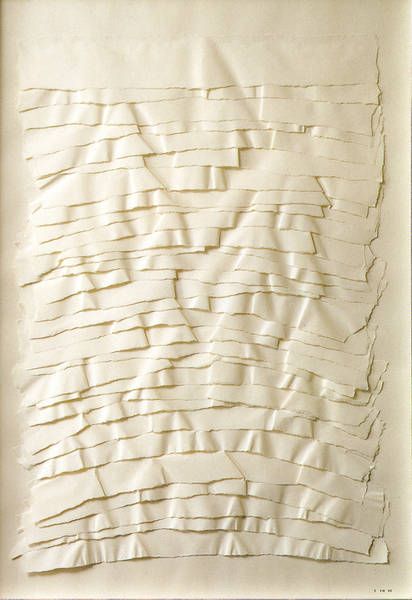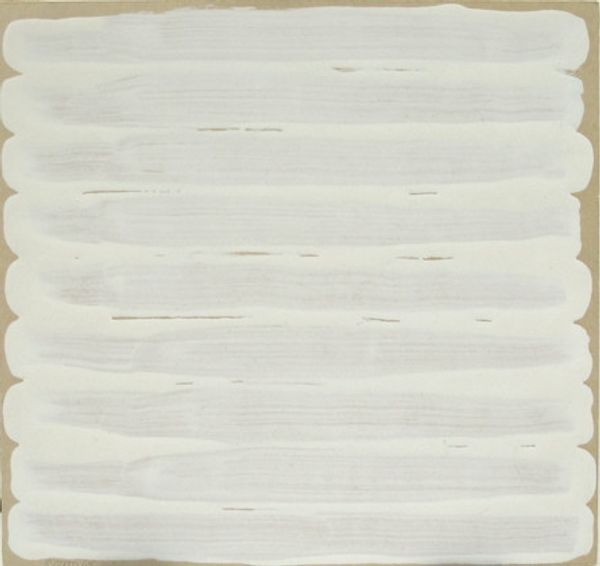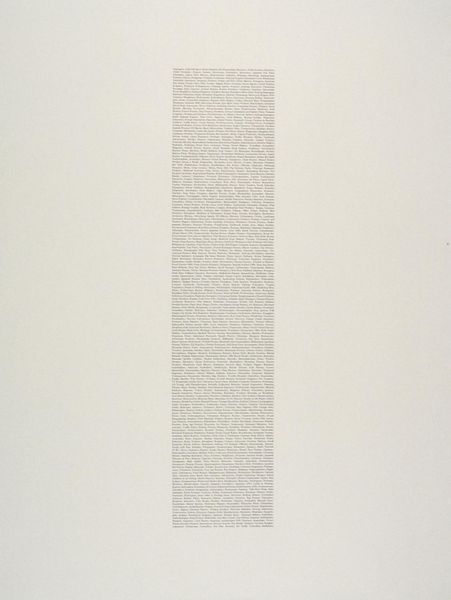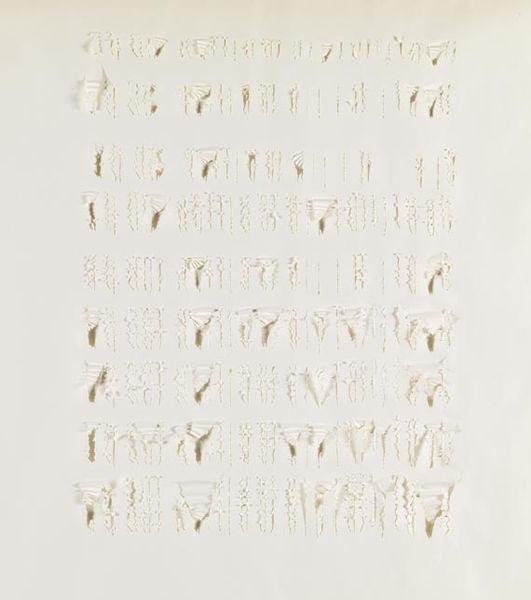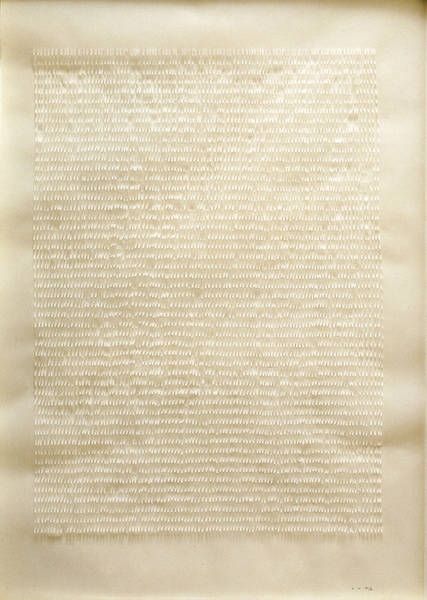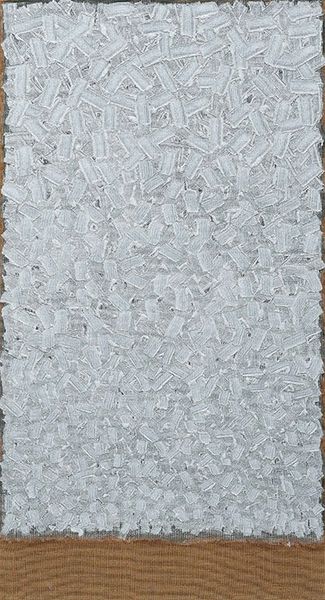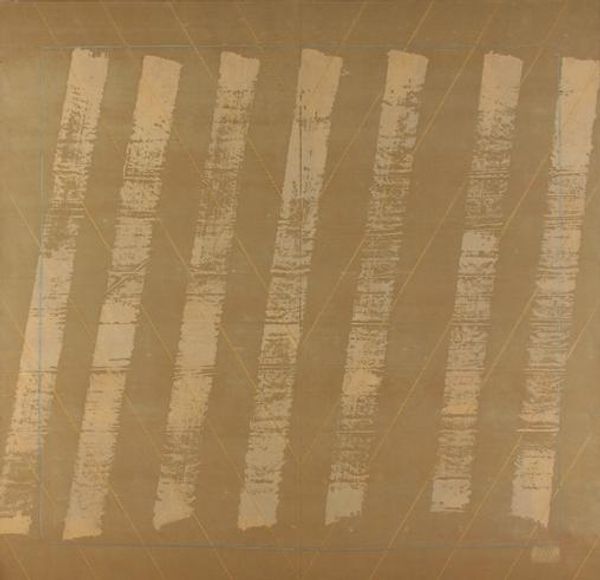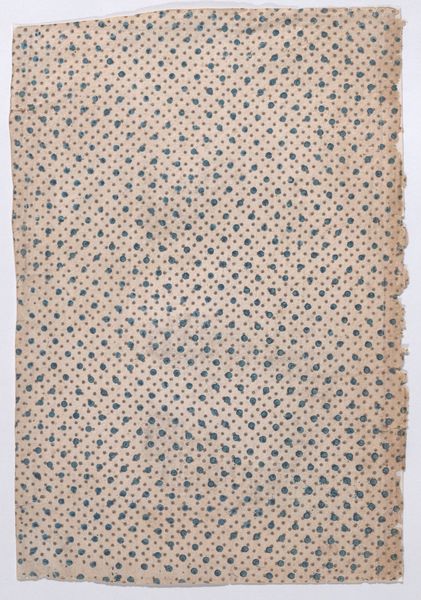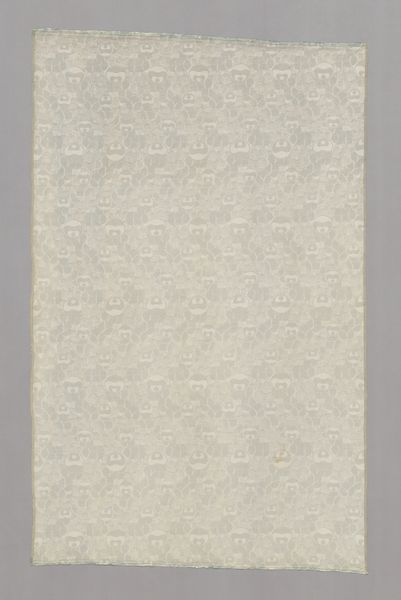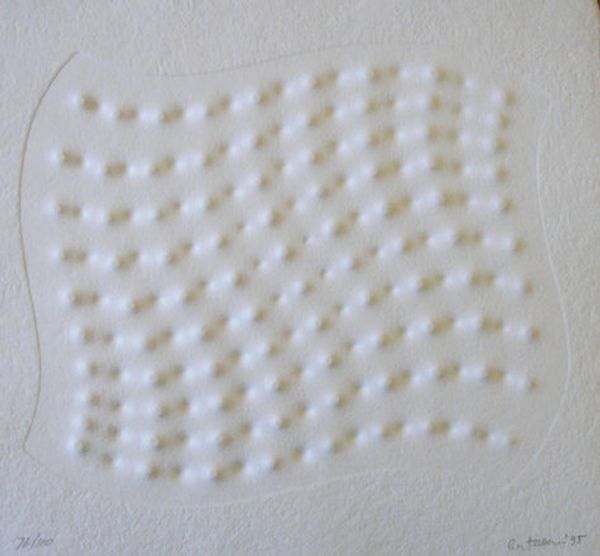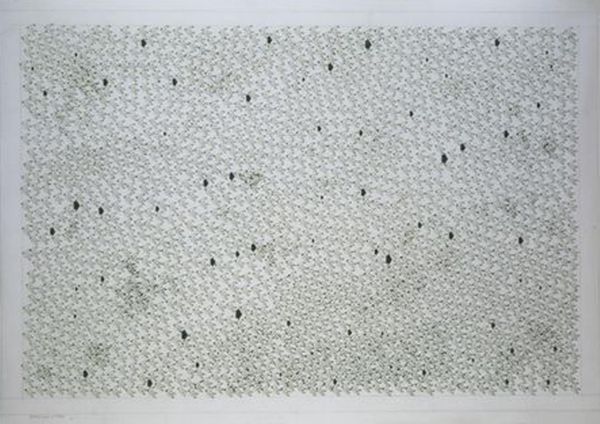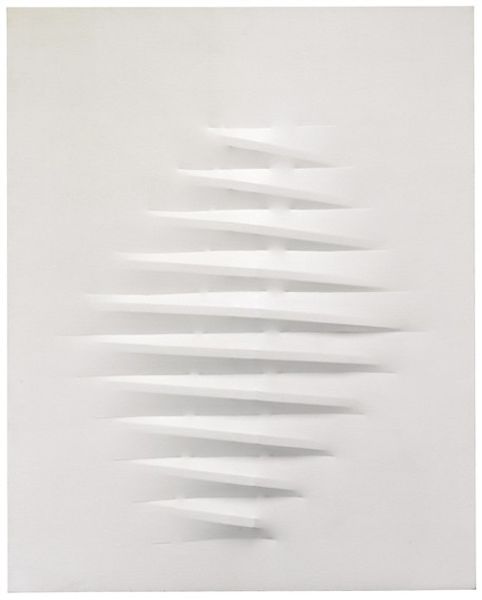
relief, paper
#
conceptual-art
#
minimalism
#
relief
#
paper
#
form
#
text
#
geometric
#
abstraction
#
line
#
monochrome
Copyright: Oskar Holweck,Fair Use
Curator: Welcome. Before us hangs Oskar Holweck's "7 VIII 74/6," created in 1974. Holweck was deeply involved in conceptual and minimalist approaches, and this relief made of paper embodies those influences perfectly. Editor: My first impression is…quiet. There’s a subtle violence here, paper being torn and reformed, but mostly I feel an immense calm. The monochrome palette and regimented lines are incredibly soothing. Curator: That tranquility, or perhaps more accurately, restraint, reflects the socio-political climate of the time. Germany in the 70s was grappling with its past and cautiously building a new identity. Holweck's austere geometric abstraction really speaks to that conscious decision to embrace simplicity and control after years of turbulence. Editor: And there’s something compelling about the act of manipulating paper, such a fragile material. It suggests vulnerability, a peeling back of layers to reveal what's underneath, which echoes personal and collective traumas experienced. Is it erasure, or re-writing? I find the repeated text very interesting: almost like it's been typed again and again in one single moment and quickly changed again, the shapes like mountains. Curator: Precisely! He utilizes form and repetition, not just for aesthetic effect, but as a commentary on information and communication itself. These almost textual lines appear both precise and incomplete. We, as the viewers, expect it to communicate in a traditional way, to read, but Holweck prevents access. In the art world, that idea that minimalism served, in part, to question what, how, and who can claim public art and conceptual art remained pervasive during the period. Editor: It certainly prompts me to reflect on what stories get told and how. What remains, what’s legible, and what's been forcefully removed from that narrative? The way the paper is shaped, so consistently, also speaks of human agency and, again, perhaps, some form of societal conditioning. Curator: Yes, he pushes the boundaries of the medium itself. Paper, usually a vehicle for delivering information, here becomes the subject. He challenged the institution's accepted mediums and even practices. The date in the title also encourages one to consider a time, an era. Editor: Ultimately, Holweck invites us to engage with abstraction not just as an aesthetic choice but as a way to reflect critically on the social landscape around us. It requires patience and thoughtful attention, mirroring perhaps the long work of acknowledging painful legacies. Curator: A piece that offers both contemplation and a historical lesson in the power of abstract form.
Comments
No comments
Be the first to comment and join the conversation on the ultimate creative platform.
